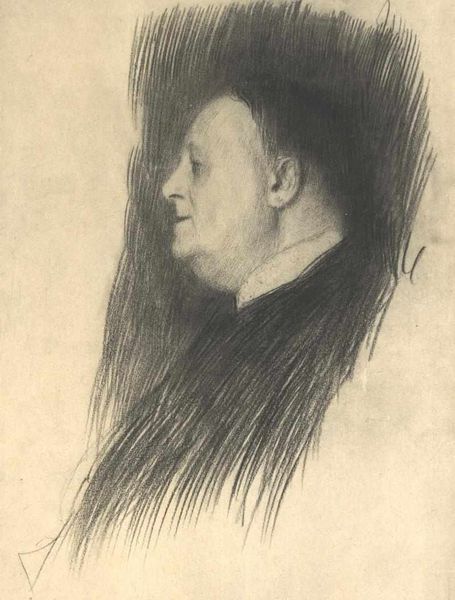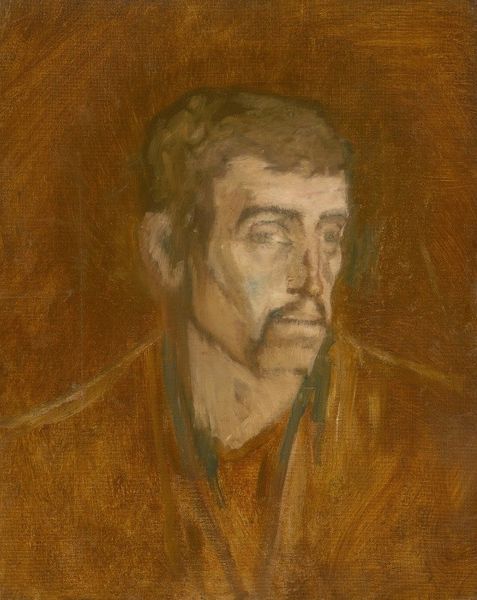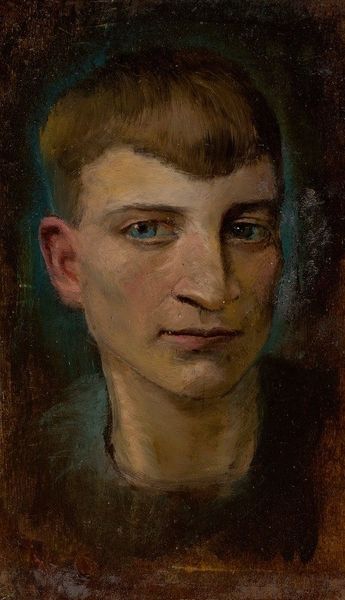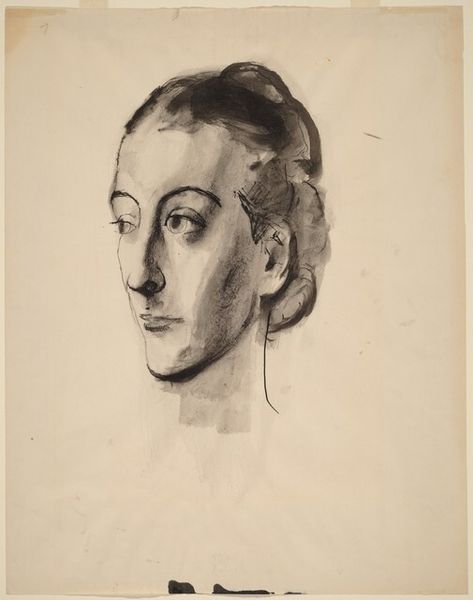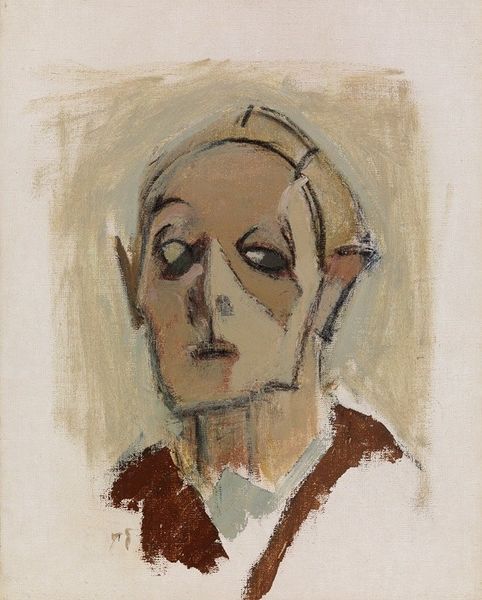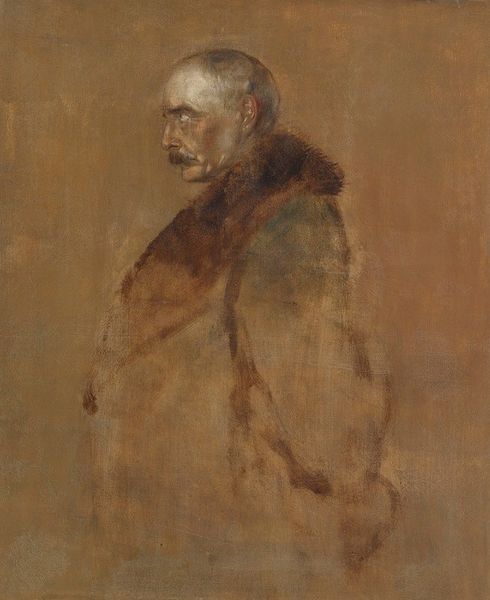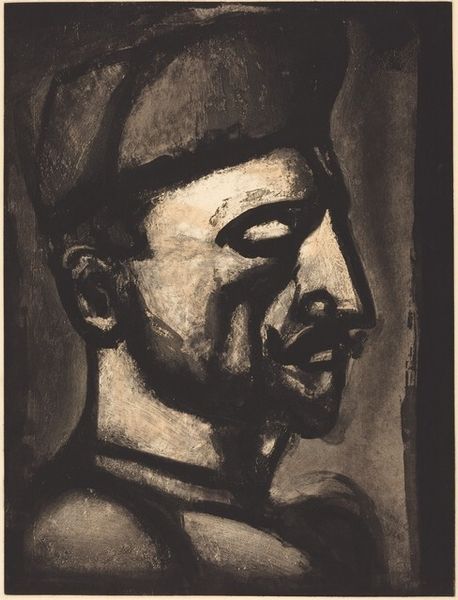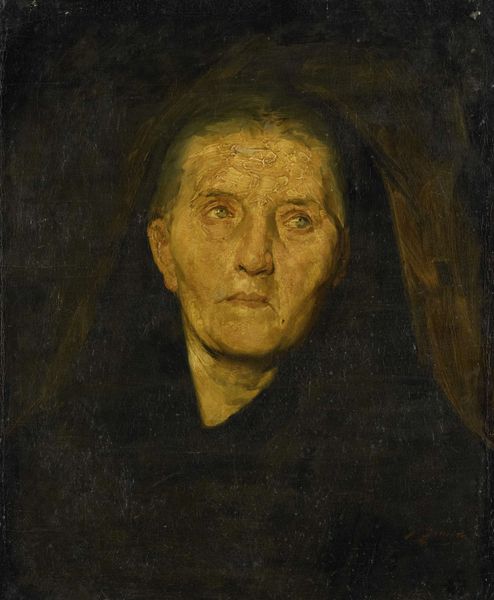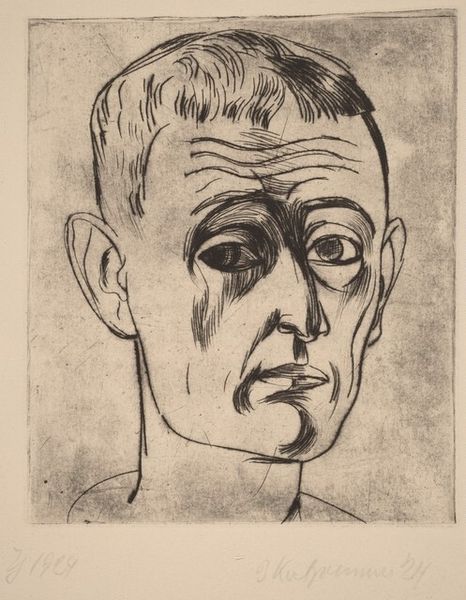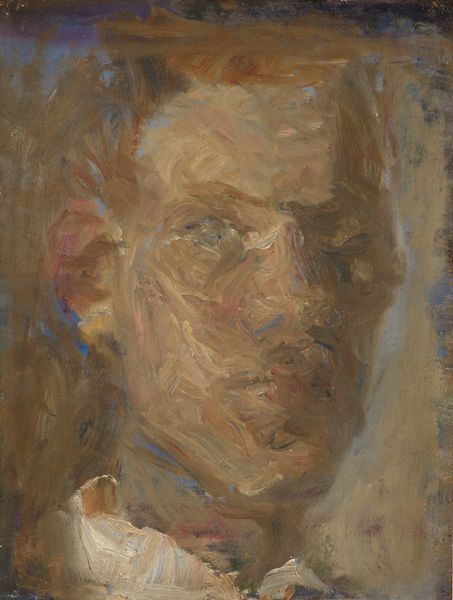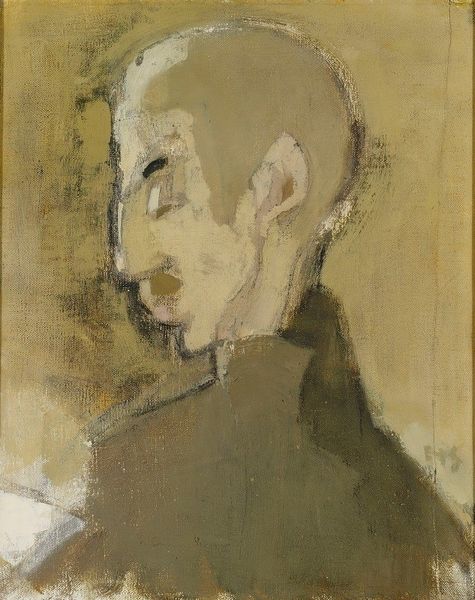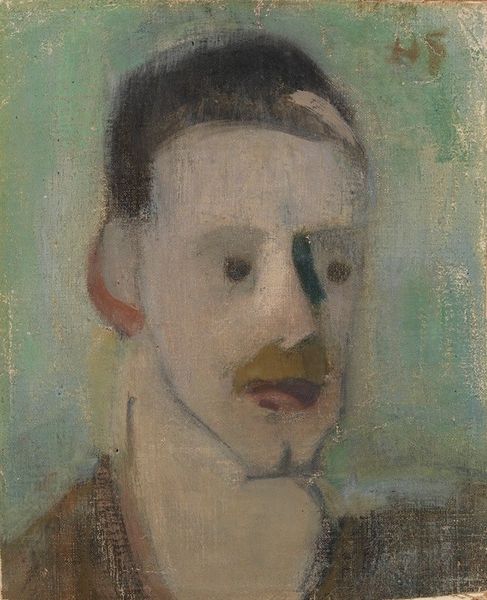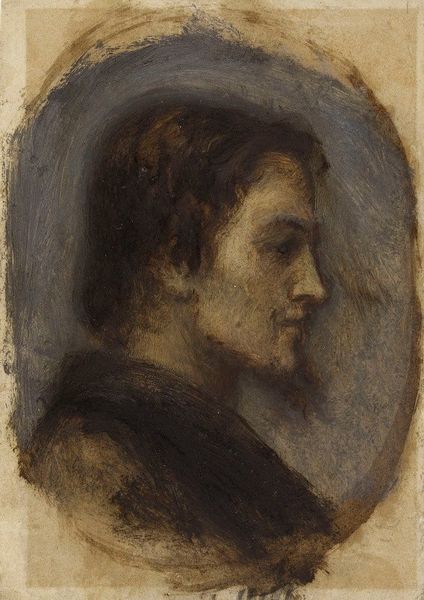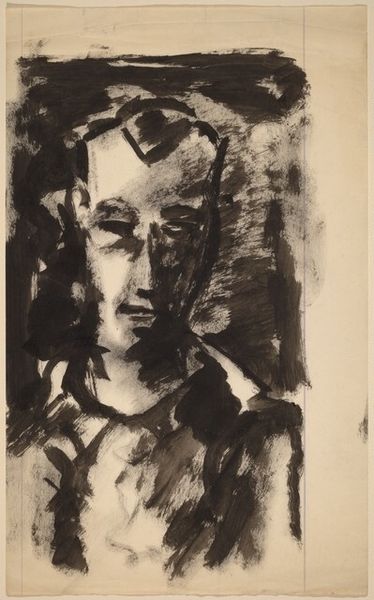
oil-paint
#
portrait
#
figurative
#
oil-paint
#
oil painting
#
expressionism
#
symbolism
#
portrait art
Copyright: Public Domain: Artvee
Curator: Here we have "Head," painted in 1894 by Magnus Enckell, using oil paint. It's an early work, a compelling example of Finnish Symbolism from that era. Editor: My first impression is one of solemn introspection. The palette is muted, mostly dark shades punctuated by the pallid face and intense red of… a cloak? The downward gaze only amplifies the sense of quiet contemplation, or even sorrow. Curator: It's fascinating to consider the Finnish art scene at the time. The late 19th century was a period of intense national romanticism in Finland. Artists were looking both inward, to Finnish folklore and identity, and outward to the broader European Symbolist movement. This artwork appears to reflect that very well. Editor: I see that tension acutely in the figure. The dark background is almost claustrophobic, the sharp geometry of the cloak feels restrictive, almost suffocating, and I feel there’s some message around what identity is, who has it, and what it takes to wear it, especially around notions of expression and visibility. How do you understand this portrait in its historical context? Curator: Enckell was moving in circles that were re-defining the public image of the artistic persona, and as he was a known advocate for liberal values, this quiet work speaks volumes about individual freedom. Editor: Right, it is striking to me that the painting, at first glance, could come across as classical. The more I look at it though, I see the bold choices in composition, brushstrokes, the artist is doing more than simply rendering a likeness, and is, rather, conveying an experience, perhaps exploring gender presentation within society? Curator: Well, it also challenges accepted views of what a portrait is. The historical expectations for a formal portrait was to create a grand statement about societal position. This is, in comparison, so stark! In this artistic milieu, to move toward personal emotional revelation *was* indeed radical. Editor: Agreed! And in closing, for me, what’s powerful is Enckell’s bravery to create a moment of quietude and perhaps some emotional solace and even queer visibility, rather than creating another status symbol. Curator: Yes, it’s that intimate and vulnerable quality that makes it so very modern, so aligned with contemporary questions of personhood and individual rights.
Comments
No comments
Be the first to comment and join the conversation on the ultimate creative platform.
